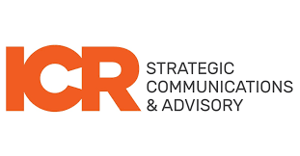SPACs – Special Purpose Acquisition Companies – have risen to prominence over the last few years. Another way to look at a SPAC IPO might be to call it a SPAC “IPM” – for Initial Public Merger. The transaction structure provides for a publicly listed shell corporation to acquire/merge with an operating business, which becomes a publicly traded company following the completion of the transaction process. As of June 30, 2020, there were more than 100 publicly listed SPACs, holding more than $30 billion in cash, in the process of identifying potential operating company merger partners.
Ten years ago SPACs were often associated with acquiring businesses that weren’t ready for life as a public company. More recently, however, SPACs are being sponsored by highly credible executives and M&A experts, with substantial institutional or private equity sponsorship.
SPAC Market Sectors and Investor Impact
SPAC IPOs have accelerated in sectors such as technology, where VCs want better liquidity solutions without the pricing inefficiencies of an IPO. The structures are also evolving and improving, attracting substantial backing from institutional investors who like the transparency, access, and investment options of a SPAC transaction versus a traditional IPO.
Repeat SPAC sponsors, up-sized IPOs, and increased focus on sectors, like technology, that didn’t previously attract much attention, have driven record SPAC IPO activity. In the second quarter of 2020, 23 SPACs raised approximately $8 billion, exceeding Q2 2019 issuance of $4 billion.
Despite no SPAC IPO activity between the COVID-induced lull of March 10 and April 21, more than 30 SPAC IPOs have priced since then, bringing the total for the first half of 2020 to $12 billion, exceeding H1 2019 issuance of $7.3 billion. In addition, the largest SPAC ever, Pershing Square Tontine Holdings, Ltd., priced a $4 billion IPO on July 22, 2020.
The broad acceptance of SPACs is indeed transforming the IPO market, both for corporate issuers and investors. For corporate issuers, SPACs provide greater certainty for a transaction, including a negotiated “clearing” price, with more liquidity to owners versus an IPO.
Why Investors May Prefer SPAC Stock
High-quality SPAC sponsors are finding great merger partners, and investors prefer the structure of both because it allows for greater and more direct diligence with the company and because they can buy stock freely in the open market after the deal is announced, not beholden to the investment bank equity capital markets process, which most often favors a few select institutional investors. As a result, we’re seeing a real democratization of the IPO market. Individual investors on platforms such as Robinhood or with a Schwab retail account have the same access to forward-looking information and SPAC reports as institutional giants like Blackrock or Fidelity, which truly level the playing field.
The De-SPAC Process
A successful listing of a SPAC IPO is just the beginning of the process. SPACs typically have 24 months post-IPO to complete a successful business combination. After a target acquisition has been identified and a deal negotiated, the “de-SPAC” transaction process begins.
To be successful, SPACs need an experienced team of advisors that understands the de-SPAC process, the industry of the target business, the challenges related to announcing an acquisition, and communicating to all your constituents (SPAC shareholders, sector-focused institutional investors, employees, key business partners, the media, etc.), and the shareholder vote process.
3 Key Steps in SPAC Communications
SPAC Research, a leading online newsletter, noted that “first-time sponsors frequently underestimate the challenge of the de-SPAC process, especially in moving shares from SPAC arbs into the hands of would-be fundamental holders in the target company. Many SPACs underperform at basic IR functions such as ensuring sell-side coverage, hosting an analyst day, and developing a modern website. So why aren't all SPACs using IR firms?”
The SPAC’s proposed acquisition announcement represents the start of a high-stakes, condensed timeline to complete the transaction, and there are three important steps to executing a successful de-SPAC process.
1. Maximize Awareness of the Deal
SPACs and their merger partners often miss multiple opportunities to properly target the media, institutional investors, and retail investors. These are not traditional IPOs – expert advice is important for optimal execution – and require an integrated IR and PR program.
A traditional IPO is marketed exclusively to the clients of the underwriting investment banks, but when you announce a merger with a SPAC, you have an opportunity to market the deal to EVERY investor, both institutional and retail, domestic or foreign. All they need is a brokerage account. Furthermore, whereas a traditional IPO involves SEC-mandated limits on communication, SPACs are permitted to engage in all forms of marketing and communication to generate interest in the transaction.
2. Market the SPAC
Investment banks, which act as advisors in these transactions, are important, but their marketing capabilities are limited to their sales and equity capital markets functions. It’s important to establish a broad investor marketing effort. In addition, it’s critical to target all the analysts that cover the sector, not just the analysts from the investment banks acting as advisors. You will also have to run a well-organized analyst day on short notice. Lastly, leveraging media relations throughout the deal's marketing efforts and setting the right SPAC performance expectations can drive strong momentum in a de-SPAC process.
3. Secure Shareholder Support
SPAC sponsors should not take shareholder voting for granted. Don’t underestimate complex deal structures or the importance of Environmental, Social, and Governance (ESG) considerations of investment funds. Governance advisory firms are watching closely, and these firms are weighing in more frequently on SPAC mergers as the deal size and institutional interest grows. Shareholder vote recommendations and governance oversights can complicate the process immediately before closing.
The New Public Company
Once the merger closes, the target business essentially becomes the successor public company and to be successful, it’s critical to have the investor relations and public relations capabilities along with public company infrastructure in place. In addition, private investors that rolled over equity into the transaction will eventually want a liquidity event.
It’s important for every management team to “hit the ground running” as a new public company, making sure to follow SPAC rules and regulations. This may necessitate a more aggressive IR program in the first 12 months of public life to drive increased awareness, secure more sell-side coverage, and eventually plan for a secondary offering for holders that signed lock-up agreements. Selecting a seasoned capital markets advisor with significant SPAC experience can help manage the process.
While interest in SPACs may ebb and flow, they are here to stay because they are solving a complex challenge that IPOs can’t – they obtain more liquidity for private companies and their investors and do it by allowing every possible investor to participate in a highly transparent way.
Don Duffy, a leading expert on IPOs, Special Purpose Acquisition Companies (SPACs), and other complex corporate transactions, currently serves as ICR’s President and co-runs the firm.

|
ICR is the largest advisor and communications consultant to SPACs, having completed dozens of transactions over the past decade. To obtain a copy of ICR’s latest SPAC update report please click here. |
Get the latest PR, IR, Marketing and Media tips on the Business Wire Blog. Subscribe today!





